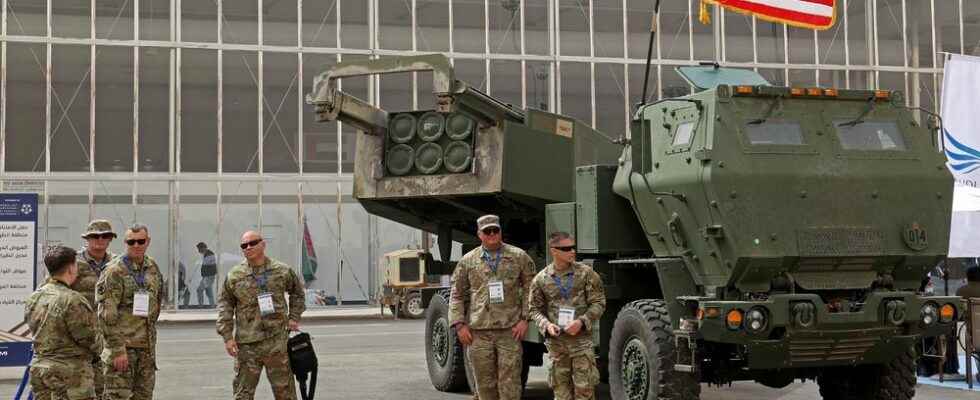“Of course, we aspire to take back all of our territories: for me, that is the definitive victory.” In his exclusive interview granted to L’Express this week, Ukrainian President Volodymyr Zelensky is very clear about his war aims. But, beyond the announcement effects, do its armed forces really have the capabilities?
After six months of conflict, Russia occupies nearly 20% of Ukrainian territory, mainly in the South and East. “In the short term, the reconquest of the lost Ukrainian territories is not an achievable objective, decides General Dominique Trinquand, military expert and former head of the French mission to the UN. On the other hand, in the longer term, if the support Western military and financial continues, even strengthens, and as the Russians continue to weaken, it could become conceivable.”
At the end of February, at the very beginning of the conflict, the rapid advance of Russian troops had raised fears of the worst, before the forced withdrawals of Putin’s army and then a war of attrition. Since the beginning of the summer, Moscow has not posted any notable territorial gains. “Their troops are not able to create sufficient mass and density anywhere that would allow them to launch a significant assault, points out General Ben Hodges, former commander of American forces in Europe. are reduced to using their artillery. It’s the only thing they are still capable of.” According to a Pentagon estimate dated August 8, between 70,000 and 80,000 Russian soldiers have been killed or injured since the start of the conflict.
Massive Western support, essential for the reconquest
Stating that the “worst case scenario is behind us”, Ukrainian Defense Minister Oleksy Reznikov said on Tuesday August 23 on CNN that kyiv was preparing to move on to “a new stage” of counter-offensives, in order to recover territories. “One of the main threats” today, according to this close friend of Zelensky: that a possible weariness of Westerners with regard to a prolonged conflict translates into a drop in their material support. “Any reconquest operation can only be imagined with massive Western aid, confirms Samantha de Bendern, researcher specializing in Russia at Chatham House, a London think tank. And even then, it will remain complicated.”
So far, the support is not waning. On Wednesday August 24, Joe Biden announced a new round of military aid of $3 billion for Ukraine, the largest to date. “This will allow Ukraine to acquire air defense systems, artillery systems and ammunition (…) and radars to ensure that it can continue to defend itself in the long term,” said declared the American president. A week earlier, Washington had already released an envelope of 775 million dollars, including, among other things, additional ammunition for the Himars multiple rocket launchers, provided during the summer.
A Himars precision rocket launcher, of the type supplied to Ukraine this summer, on March 6, 2022 in Saudi Arabia
afp.com/Fayez Nureldine
The arrival on the battlefield of this precision artillery allowed Ukraine to embark on a campaign of strikes behind enemy lines, methodically targeting Russian ammunition and fuel depots. Images of their explosions have become almost daily on social media. “Destroying Russian logistics makes it possible to reduce the effectiveness of its artillery, which is its main asset in this war, notes General Trinquand. This can only facilitate, subsequently, the conduct of a counter-offensive by the Ukraine.”
Kherson, first goal by winter
In Kherson, in the south, the Ukrainian strikes have already made it possible to seriously damage the two bridges which connect this city held by the Russians to the rest of the occupied territories further east. Way to complicate the supply as well as any retreat in case of counter-offensive. At the end of July, the Ukrainian authorities in the region had expressed their desire to “definitively liberate” the province “by September”. “If the Russians are defeated at Kherson, it will represent a major human defeat for them but also a psychological defeat,” points out American General Ben Hodges.
“This is the only possibly achievable objective by winter, adds General Trinquand. On the other hand, a possible reconquest operation in the Donbass or in the South can only be envisaged step by step and over several years. Ukrainians have also suffered significant losses and we will have to reform an army.” And improve your training. In June, British Prime Minister Boris Johnson announced the launch of an operation to train 10,000 Ukrainian soldiers on British soil in 120 days. According to New York Times, more than 2,000 Ukrainian soldiers have already completed their training. On August 22, the head of European diplomacy, Josep Borrell, indicated that a similar initiative would be discussed by the Europeans at the end of the month.
At the same time, Crimea, annexed by Moscow in 2014, was the first target of a series of strikes in August. A sign of kyiv’s desire to move forward, President Zelensky announced the creation of a council “for the disoccupation of Crimea”, responsible for working on the reintegration of the peninsula into Ukrainian rule.
“One day or another, Ukraine will recover Crimea, and whatever means are used, we will return to this land,” he reaffirmed in L’Express this week. According to experts, however, this objective still seems highly uncertain. “For Moscow, Crimea is now part of the territory of the Russian Federation, underlines Samantha de Bendern. To try to take it back by force would run the risk of a major escalation, which is difficult to control.”
